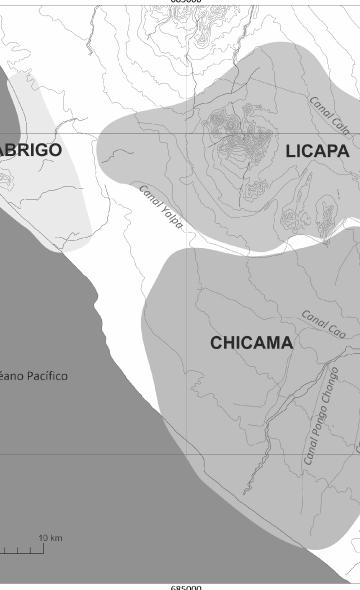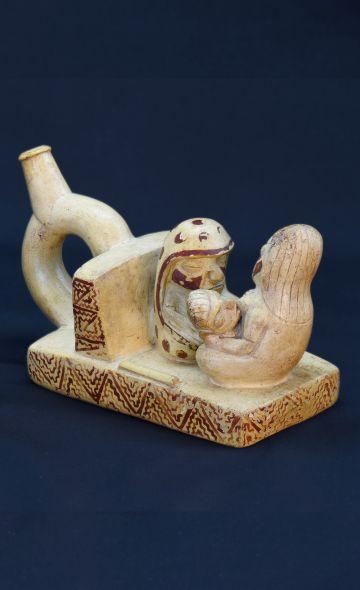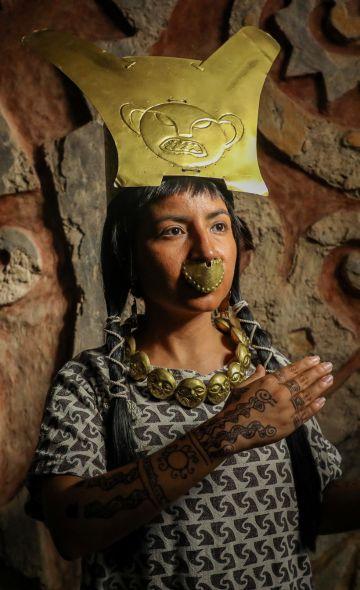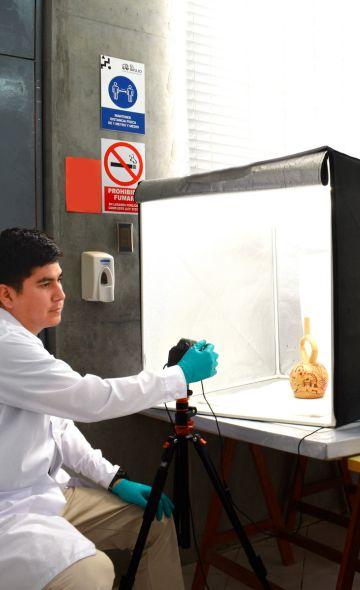- Visitors
- Researchers
- Students
- Community
- Information for the tourist
- Hours and fees
- How to get?
- Visitor Regulations
- Virtual tours
- Classic route
- Mystical route
- Specialized route
- Site museum
- Know the town
- Cultural Spaces
- Cao Museum
- Huaca Cao Viejo
- Huaca Prieta
- Huaca Cortada
- Ceremonial Well
- Walls
- Play at home
- Puzzle
- Trivia
- Memorize
- Crosswords
- Alphabet soup
- Crafts
- Pac-Man Moche
- Workshops and Inventory
- Micro-workshops
- Collections inventory
- News
- Researchers
- Territory and Indigenous society in the Chicama Valley in the 16th century
News
CategoriesSelect the category you want to see:
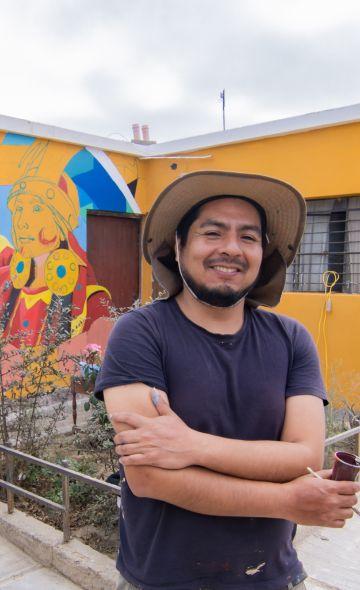
Magdalena de Cao to Once Again Host an International Mural Art Gathering ...
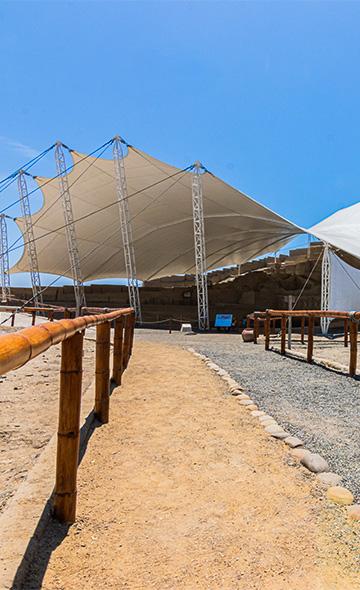
Explore El Brujo Through Virtual Tours: Culture and History at a Click ...
To receive new news.
By: Jose Ismael Alva Ch.
By: Jose Ismael Alva Ch.
Resident Archaeologist at the El Brujo Archaeological Complex
The Spanish invasion cause great changes in the social and territorial organization of the Andean world. Through the establishment of the Viceregal government, a system of encomiendas was instated, through which the colonists benefitted from Indigenous labor, and Native populations were relocated to the so-called “reducciones”, with the objective of facilitating the collection of tribute and the organization of labor.
The testimonials of Indigenous leaders, or curacas, from the Chicama Valley, recorded in documents written by the Viceregal administration, are an important source of information since they reveal multiple aspects about the Native social order and its changes during the early Colonial Era. In the following text, we will present some results of studies carried out on this topic over the last decades.
The Pre-Colonial Chicama
Located on what is now the North coast of Peru, the Chicama Valley was recognized by the Spanish soldier Pedro Cieza de León and by the religious man Antonio Vazquez de Espinoza as one of the largest and most fertile countrysides of the recently-conquered region (Cieza de León 1984, pg. 207; Vazquez de Espinoza 1948, pg. 365). These conditions were generated by the human effort previously invested over various centuries in the construction of irrigation canals that allowed for the expansion of the agricultural area.
According to Native accounts of the valley, up until the beginning of the Colonial Era, there was a Lordship of Chicama under the rule of Chayguaca, its last Lord. This great lordship was made up of three political units, each with their own principal curacas (Hart 1983, pg. 289; Netherly 1977, pg. 135):
- Chicama: This was the most extensive. It was located to the south of the town of Chocope, covering both sides of the Chicama River up to the town of Sausal to the east.
- Licapa: This was located to the northeast of Chicama, with the ancient canal of Yalpa as its southern border and the Andean foothills as its boundary to the north.
- Malabrigo: This was located at the northeastern end of the valley, at the location of the modern-day port of Chicama.
While these political units were joined through marriage alliances among their elite, there was also a hierarchical order of authorities. Thus, the curacas of Malabrigo paid service to the curacas of Licapa, and these were at the service of the nobility of Chicama (Hart 1983, pg. 290; Ramírez 1995, pg. 252).

Figure 1. Map of the distribution of pre-Hispanic political entities in the Chicama Valley at the beginning of the 16th century.
Encomiendas, reducciones, and hierarchies
A series of changes rocked the Andean world after the break-up of the social order of Tahuantinsuyu, the fatalities caused by the diseases brought by the Europeans, and the imposition of Spanish institutions. In the Chicama Valley, these alterations were marked in the 1560s with the establishment of the encomiendas of Licapa and Chicama, as well as the foundation of various Indian reducciones in places where there were probably already Native towns and associated irrigation canals.
Ethnohistoric studies indicate that the encomienda of Licapa, given to the Spaniard Francisco de Fuentes Guzmán, had Don Francisco Nuxa as its principal curaca and the town of Paiján was its home, the most notable of the reducciones during the 16th century (Hart 1983, pg. 305; Ramírez 1995, pg. 254; Zevallos Quiñones 1996, pg. 308). On the other hand, the encomienda of Chicama, given to Diego de Mora Pizarro, had at least four reducciones: Chocope, [Magdalena de] Cao, Sandiago [de Cao], and Chiquitoy (Hart 1983, pg. 299; Netherly 1977, pg. 137; Ramírez 1995 pg. 260).
At that time, Indigenous political power within the encomienda of Chicama was reorganized, with the principles of Andean duality as a reference. The river was the geographic division between the major partialities (North and South). In this way, in 1568 there were four principal curacas instituted in complementary positions with a hierarchy among themselves (Hart 1983, pg. 295). Don Juan de Mora, who upon his baptism took the last name of the Spanish beneficiary of the encomienda, was the principal curaca of Chicama, residing in the town of Chocope.
Don Alonso Chuchinamo was another principal curaca from the partitioning, and he lived in the town of Cao (or Caux), known later on as Magdalena de Cao. To the south of the Chicama River, Don Pedro Mache was the most notable principal curaca in the encomienda after Don Juan de Mora, residing in the town of Santiago de Cao, known early on as Santiago Quechecpa. Finally, there was the curaca Don Gonzalo Sulpinamu, whose town of residence is unknown (Castañeda Murga and Gálvez Mora 2002, pg. 63-64; Hart 1983, pg. 299; Netherly 1977, pg. 137; Zevallos Quiñones 1992).

Figure 2. Map of the Chicama Valley showing the encomiendas of Licapa (to the North) and Chicama (to the South), as well as the main reducciones, or Indian towns.
Economic activities
Throughout the 16th century, the Indigenous community of Malabrigo continued practicing its traditional economic activities such as fishing, salt exploitation, salting fish, and trading this marine resource for agricultural products, since they did not own lands to cultivate.
To the south, the reducciones of Cao and Santiago were inhabited by families of farmers and presumably also fisherpeople, who took advantage of the extensive shoreline. On the other hand, the inland towns such as Chocope were where the agriculturists lived, who progressively incorporated the mass cultivation of foreign plants such as wheat and, of course, sugar cane.
Deer hunting, widely represented in Moche ceramics, was done with hunting dogs brought by the Europeans. The curaca Martin Socnamo testified in 1566 that he owned four dogs for hunting the deer that came into the agricultural fields. The meat of these animals was part of the sustenance of the valley’s families (Hart 1983, pg. 308; Netherly 1977, pg. 79).
The information written about artisanal activity is scarce; however, the archaeological excavations done at the ruins of the town of Magdalena de Cao at the El Brujo Archaeological Complex recorded evidence of Native production of textiles, ceramic vessels, Spondylus and Mother-of-Pearl beads, and metal artifacts, most of which maintained their own cultural patterns (Quilter 2020).

Indigenous fishing using wooden rafts and nets during the 18th century. Drawing published by Bishop Martínez Compañón (Martínez Compañón 1985, Fig. 126).
 Native weaving on a backstrap loom during the 18th century. Drawing published by Bishop Martínez Compañón (Martínez Compañón 1985, pg. 100).
Native weaving on a backstrap loom during the 18th century. Drawing published by Bishop Martínez Compañón (Martínez Compañón 1985, pg. 100).
Summary
The written and material records from the early Colonial Era contain much information about the transition from the original lifeways of Andean peoples to the progressive adoption of European models. In the case of the Chicama Valley, Spanish domination left an unerasable imprint on the political configuration of the valley.
With the passing of the centuries, various of the Colonial reducciones became the capitals of the modern districts of the province of Ascope, where their people inherited the intricate historical processes of the region and of Peru.
References
Castañeda Murga, J., & Gálvez Mora, C. A. (2002). Santiago de Cao. Indagaciones sobre su historia. Municipalidad Distrital de Santiago de Cao.
Cieza de León, P. de. (1984). Crónica del Perú. Primera parte. Pontificia Universidad Católica del Perú.
Hart, E. A. (1983). Prehispanic Political Organization of the Peruvian North Coast [Doctor of Philosophy (Anthropology)]. University of Michigan.
Martínez Compañón, B. J. (1985). Trujillo del Perú: Vol. II (Agencia Española de Cooperación Internacional).
Netherly, P. (1977). Local Level Lords on the North Coast of Peru [Doctor of Philosophy (Anthropology)]. Cornell University.
Quilter, J. (Ed.). (2020). Magdalena de Cao. An Early Colonial Town on the North Coast of Peru (Vol. 87). Peabody Museum Press.
Ramírez, S. E. (1995). De pescadores y agricultores: Una historia local de la gente del valle de Chicama antes de 1565. Bulletin de l’Institut Français d’Études Andines, 24(2), 245-279.
Vazquez de Espinoza, A. (1948). Compendio y Descripción de las Indias Occidentales (C. Upson Clark, Trad.). Smithsonian Institution.
Zevallos Quiñones, J. (1992). Los Cacicazgos de Trujillo.
Zevallos Quiñones, J. (1996). Liquidación anual de las encomiendas trujillanas en 1683-88. Histórica, XX(2), 303-311.
Researchers , outstanding news


